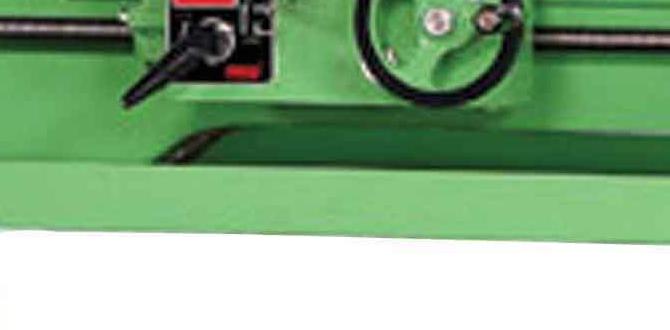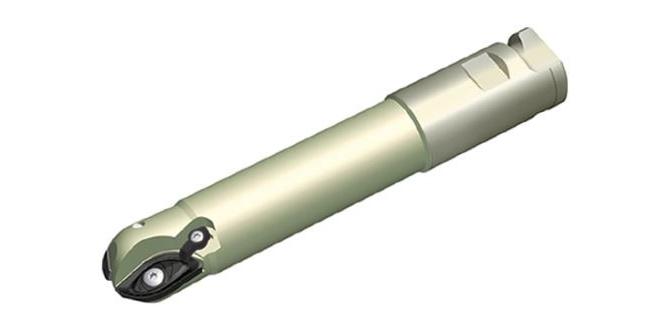Quick Summary
Looking for DIY wood lathe blueprints? You can build your own wood lathe duplicator with proven designs. This guide offers straightforward, step-by-step plans perfect for beginners, ensuring you can replicate components accurately and efficiently. Get ready to transform your woodworking projects with this essential shop-built tool!
Ever wished you could perfectly duplicate a turned shape on your wood lathe? It’s a common challenge for many woodworkers, especially when creating sets of matching parts like table legs or spindle components. Trying to freehand consistent shapes can be frustrating and time-consuming. But what if you could build a tool that helps you do just that? This article is all about DIY wood lathe duplicator blueprints. We’ll explore proven designs that are accessible for home shop builders. Get ready to learn how to create a device that will make your duplicate turning tasks a breeze!
Why Build a Wood Lathe Duplicator?
A wood lathe duplicator is a game-changer for anyone who needs to create identical turned pieces. Think about making a matching set of bedposts, balusters for a staircase, or even multiple identical decorative elements for a piece of furniture. Manually achieving perfect consistency across several workpieces is incredibly difficult. A duplicator attachment essentially guides your cutting tool along a master template, automatically replicating its shape onto your workpiece. This saves immense time, reduces errors, and ensures a professional, uniform result every time.
Beyond efficiency, there’s a real satisfaction in building your own shop tools. It’s a fantastic way to learn more about mechanical design, precision, and how your lathe operates. Plus, it can be a significantly more affordable option than purchasing a commercial duplicator, which can often be quite expensive.
Understanding How a Wood Lathe Duplicator Works
At its core, a wood lathe duplicator works on a simple principle of guided replication. You create a master pattern, usually from thin plywood or hardboard. This pattern is then mounted alongside your workpiece on the lathe. A tracing mechanism, typically a stylus or a roller connected to a follower arm, is positioned to run along the edge of your master pattern. As your lathe spins, you move the cutting tool along with the follower arm. The follower arm’s movement dictates the depth of cut, ensuring the tool carves the same shape into your workpiece as the master pattern’s profile.
There are several designs, but most involve:
- A way to mount the master pattern.
- A way to mount the workpiece.
- A tracing mechanism (stylus/follower).
- A cutting tool holder that moves with the tracing mechanism.
- A mechanism to feed the tool into the wood.
Key Components of a DIY Wood Lathe Duplicator
Before diving into blueprints, let’s break down the essential parts you’ll likely encounter in most DIY designs. Understanding these components will make choosing or adapting a plan much easier.
1. The Bed/Mounting System
This is the foundation of your duplicator. It needs to be sturdy and securely attach to your lathe bed. It will hold both the master template and the cutting assembly. Materials typically include wood, metal angles, or even repurposed channel iron. The key is rigidity – any flex here will translate to inaccuracies in your duplicated parts.
2. The Master Template Holder
This part holds your master pattern. The template is usually a thin piece of material (like 1/4″ or 1/2″ plywood or hardboard) cut to the exact shape you want to replicate. The holder allows the template to be positioned precisely next to the workpiece. Some designs orient the template vertically, others horizontally.
3. The Follower Arm and Stylus
This is the “tracer” part. The follower arm is typically a lever that pivots. A stylus (a blunt point or roller) sits at one end and rests against the master template. As the template spins, the stylus rides along its edge. The arm needs to move freely but also with minimal play.
4. The Cutting Tool Holder
Attached to the follower arm, this carriage holds your woodturning chisel. The critical design element here is that the tool holder moves precisely in tandem with the stylus. As the stylus moves in or out following the template, the cutting tool moves in or out relative to the workpiece, cutting the same profile.
5. The Feed Mechanism
This system controls how deeply the cutting tool engages with the workpiece. It’s often a screw mechanism or a simple handwheel that advances the tool carriage. For beginners, a simple hand-fed system is often best, allowing you to control the cut depth precisely. More advanced designs might have power feed options, but these add complexity.
Proven DIY Wood Lathe Duplicator Blueprint Designs
There are several popular and reliable designs for DIY wood lathe duplicators. These range from very simple to more robust. We’ll look at a few common types and where you might find plans.
Design 1: The Basic Plywood Template System
This is often the starting point for many woodworkers. It’s relatively easy to build and uses readily available materials.
- Concept: A rigid frame attaches to the lathe bed. A piece of plywood or hardboard, cut to your desired shape, is mounted onto this frame. A second piece, carrying the cutting tool, slides against the template as it spins.
- Blueprint Elements: You’ll typically need plans for a sturdy base, a way to mount the template securely (often with set screws or clamps), and a sliding carriage for the tool rest that follows the template. A simple pivot for the tool arm is also key.
- Materials: Primarily plywood, common lumber, some metal fasteners (screws, bolts), and possibly a metal bar for a tool rest.
- Pros: Inexpensive to build, simple to understand, great for basic shapes.
- Cons: Can be less precise for intricate details, durability might be lower for heavy use.
Design 2: The Metal-Guided System
This design incorporates more metal components for increased rigidity and precision, especially for the sliding carriage and follower arm.
- Concept: Similar to the plywood system, but crucial moving parts like the follower arm and tool holder often use linear bearings or metal slides. This reduces friction and play, leading to much smoother operation and better accuracy.
- Blueprint Elements: Plans will detail how to work with metal stock (like aluminum or steel angle), how to integrate linear slides or drawer slides for smooth movement, and how to mount them all to a robust base.
- Materials: Wood for the base, but metal angles, channels, linear bearings, drawer slides, and more precise fasteners.
- Pros: Much higher precision and repeatability, smoother operation, more durable.
- Cons: Requires more advanced fabrication skills (metal cutting, drilling, tapping), higher cost for materials.
Design 3: The Carriage-Based System (More Advanced)
Some designs are more integrated, resembling a sophisticated tool rest that moves along the lathe bed. These often allow for more complex movements.
- Concept: Instead of a simple sliding carriage, this design often uses a mechanism that moves along the lathe bed, similar to a traditional tool rest, but with an added dimension for following the template.
- Blueprint Elements: These plans are usually more detailed, involving precision-machined parts or more complex assemblies. They might incorporate screw drives for controlled feed or more elaborate pivot points.
- Materials: Often a mix of carefully selected hardwood, metal components (precision-turned rods, machined brackets), and specialized hardware like lead screws or bearings.
- Pros: Capable of the highest accuracy and complexity.
- Cons: Significantly more building skill and cost involved. Generally not a first project for absolute beginners.
Where to Find DIY Wood Lathe Duplicator Blueprints
Finding reliable, beginner-friendly blueprints is key. Here are some excellent resources:
1. Woodworking Magazines & Websites
Many popular woodworking publications have featured DIY duplicator projects over the years. Look for archives from magazines like:
- Fine Woodworking: Often features well-illustrated, detailed plans.
- Wood Magazine: Known for practical, shop-tested projects.
- Popular Woodworking: Also a good source for project plans.
Many of these magazines offer their plans for purchase or subscription. Online woodworking forums and communities are also great places to ask for recommendations or see what others have built.
2. Online Woodworking Plans & Communities
Several websites specialize in selling woodworking plans. While some might be complex, you can often find simpler designs. Look for terms like “simple wood lathe duplicator plan” or “beginner lathe duplicator.”
Excellent online resources for woodworking plans can be found at sites like WoodworkingPlans.com or through individual woodworker’s websites. Always check reviews and comments if available to gauge the clarity and success rate of the plans.
3. YouTube and Project Videos
YouTube is an incredible resource for seeing duplicators in action and often comes with links to plans or detailed build explanations. Many makers share their entire build process via video. This visual approach can be very helpful for understanding construction steps. Search terms like “DIY wood lathe duplicator build” or “homemade lathe duplicator plans.
For example, a popular concept you’ll see demonstrated involves using drawer slides for smooth linear motion. You can often find accompanying articles or links to plans in the video description. The U.S. Consumer Product Safety Commission (CPSC) also offers advice on workshop safety, which is crucial when building and using such tools: Woodworking Machinery Safety.
4. Books on Shop-Built Tools
Several classic books focus on building your own woodworking tools. Older books can be gems, often featuring robust, time-tested designs. Check your local library or online used book retailers for titles on building lathe attachments or shop projects.
Selecting the Right Blueprint for You
Choosing a blueprint depends on your skill level, available tools, budget, and woodworking goals. Here’s a quick guide:
Consider Your Skill Level
- Absolute Beginner: Look for plans that rely heavily on basic cuts, simple joinery, and standard hardware. Plywood-based systems are often ideal.
- Intermediate: If you’re comfortable with some drilling, tapping, and maybe basic metalwork (cutting and filing), designs using drawer slides or simple metal angles become accessible.
- Advanced: If you have metalworking experience and access to a small milling machine or lathe, you can tackle designs with more precision-machined metal parts.
Examine the Materials List
Do the plans call for materials you can easily obtain? Are they within your budget? A plan requiring exotic hardwoods or specialized bearings might be more challenging to source than one using common lumber and hardware store items.
Review the Tools Required
Does the build require only hand tools and basic power tools (saw, drill)? Or does it necessitate a drill press, bandsaw, welder, or metal lathe? Be realistic about your workshop capabilities.
Assess the Complexity of the Design
Look at the diagrams and instructions. Are they clear? Can you visualize the assembly process? A well-written plan with good diagrams will be much easier to follow.
Building Your DIY Wood Lathe Duplicator: A General Step-by-Step Approach
While specific blueprints will vary, the general construction process follows a logical sequence. Always prioritize safety and measure twice, cut once!
Step 1: Gather Your Materials and Tools
Once you’ve chosen your blueprint, create a detailed shopping list. Collect all necessary lumber, hardware (screws, bolts, nuts, washers), metal components, and any specific fasteners called for. Ensure you have all the required tools ready, and set up your workspace safely.
Step 2: Prepare the Base Structure
Most duplicators start with a solid base that mounts to your lathe. This might involve cutting pieces of wood or metal to size and assembling them using screws, glue, or welding. Ensure this base is strong and has mounting points that align with your lathe bed.
Step 3: Construct the Sliding/Pivoting Carriage
This is often the most intricate part. It involves building the section that holds the cutting tool and moves in response to the template. If using drawer slides, carefully mount the corresponding sections to the base and the carriage piece. If it’s a pivoting arm design, ensure the pivot point is robust but allows free movement.
Step 4: Fabricate the Template Holder
Build the mechanism that will hold your master template. This needs to be positioned accurately next to where your workpiece will be. It might be a simple flatness, or it might have a track or guide for the template.
Step 5: Mount the Stylus/Follower
Install the stylus or roller that will trace the template. Ensure it’s securely mounted to the follower arm and that it can move freely against the template without excessive play.
Step 6: Integrate the Cutting Tool Holder
Attach the holder for your woodturning chisel. This needs to be rigidly connected to the follower arm so that the tool moves precisely as the stylus traces the template. Consider an adjustable holder so you can easily position different types of chisels.
Step 7: Assemble and Test Fit
Bring all the components together. Mount the duplicator onto your lathe. Carefully check that the carriage moves smoothly along its path and that the stylus contacts the template correctly. Ensure there are no binding points or excessive wobble.
Step 8: Create Your Master Template
Using thin plywood or hardboard, carefully cut out your master shape. This is critical for accuracy. You can trace a desired shape, use templates from other projects, or even draw your own. The edge of this template is what the stylus will follow, so it must be precise.
Step 9: Initial Test Cuts
Mount a scrap piece of wood as your workpiece. Mount your master template. Securely install a basic woodturning gouge into the duplicator’s tool holder. With the lathe OFF, position the stylus against the template at one end. Then, with the lathe running at a slow speed, gently advance the cutting tool to make a light pass, following the template’s shape. You may need to make several passes, incrementally deepening the cut, to achieve the final shape.
Safety Tip: Always wear eye protection and dust protection. Do not use the duplicator freehand; use controlled, steady pressure. Ensure all parts are securely fastened before operating.
Safety First: Important Considerations for DIY Duplicators
Building and using any shop tool, especially a homemade one, requires a strong focus on safety. Wood lathes spin at high speeds, and a duplicator introduces moving parts and cutting tools in close proximity.
- Rigid Construction: Ensure everything is securely fastened and robust. Any loose part can become a dangerous projectile.
- Smooth Operation: Check that all moving parts (follower arm, carriage) move freely without binding or excessive play.
- Tool Rest Alignment: The cutting tool must be held firmly and aligned correctly. A tool digging in at an odd angle can cause kickback.
- Template Edge: The edge of your master template should be smooth and free of chips or defects that could snag the stylus.
- Workpiece Security: Ensure your workpiece is securely mounted between centers or in a chuck.
- Clearance: Make sure the duplicator and your hands have plenty of clearance from the spinning headstock and tailstock, and any other machinery parts.
- Slow Speeds: Begin with slow lathe speeds, especially when first testing or working with larger workpieces.
- Personal Protective Equipment (PPE): Always wear safety glasses or a face shield, and consider hearing protection and a dust mask.
Referencing safety guidelines from organizations like the Occupational Safety and Health Administration (OSHA) for woodworking machinery can provide further valuable insights: OSHA Woodworking Machinery Safety.
Template Material Comparison for Accuracy and Durability
The material you choose for your master template significantly impacts the accuracy and longevity of your duplicator. Different materials offer various benefits and drawbacks.
| Template Material | Pros | Cons | Best For |
|---|---|---|---|
| 1/4″ Plywood/Hardboard | Readily available, inexpensive, easy to cut and shape. | Can wear down over time with repeated use, less rigid, might flex with heavy stylus pressure. | Simple shapes, quick projects, low-volume duplicates. |
| 1/2″ Plywood/Hardboard | More rigid than 1/4″, better durability, less prone to flexing. | Slightly harder to cut precisely, still subject to wear. | Medium complexity shapes, moderate production runs. |




